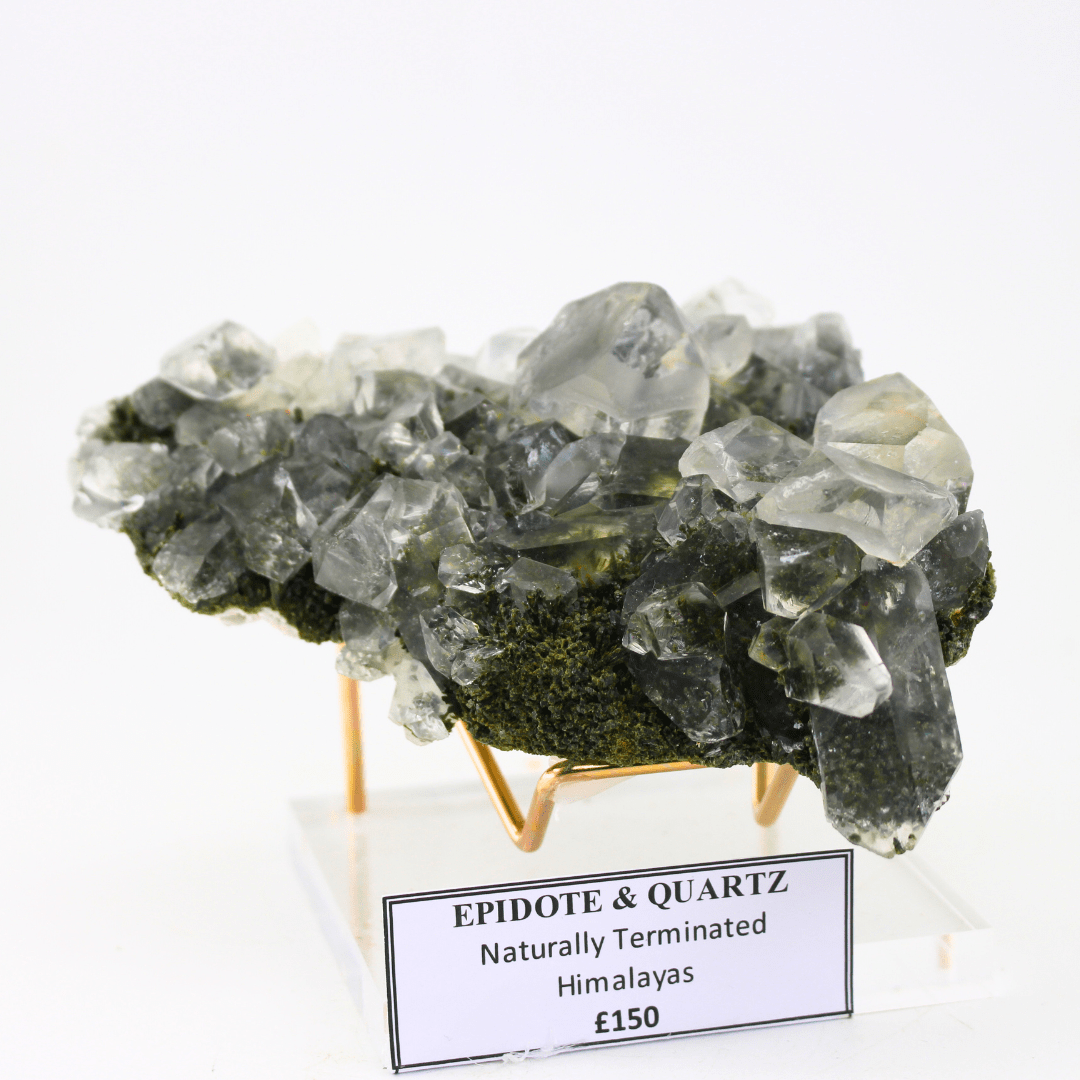SKU:E329g
Epidote & Quartz Naturally Terminated Himalayas 329g - Green, Rough, No Stone - Luxury Watch Watches|Jewellery|Gemstones|Repairs - London Kensington
Couldn't load pickup availability
Epidote & Quartz Naturally Terminated Himalayas 329g - Green, Rough, No Stone - Luxury Watch Watches|Jewellery|Gemstones|Repairs - London Kensington
Epidote & Quartz Naturally Terminated Himalayas 329g - Green, Rough, No Stone - Luxury Watch Watches|Jewellery|Gemstones|Repairs - London Kensington is selected for its balance of proportion, materiality and presence. At Imperial Time UK Ltd in London Kensington, we curate pieces that feel inevitable — refined now, enduring for decades.
Design, Materials & Presence
The character of this piece is defined by materials chosen for longevity and poise. Every surface, clasp and setting is checked under magnification; tolerances are verified by experienced hands before it joins our collection.
- Green
- Rough
- No Stone
- Natural
- Not Enhanced
- Gemstone
How It Wears
This watch sits comfortably and rewards close attention. The interplay of light and line lends quiet drama — suitable for daily wear and formal occasions alike.
Service & Delivery
- Private appointments in Kensington, London
- Fully insured UK delivery
- Part‑exchange and purchase offers available
- Honest condition reporting & optional valuations
Explore Further
Discover related selections and our wider curation:
Search terms: luxury watches London, fine jewellery Kensington, Swiss timepieces, diamond jewellery.
Our Ethos
Luxury, to us, is measured in restraint. We favour clarity over noise: pieces with grounded proportions, honest materials and finishing that rewards scrutiny. Our team brings years of experience across Swiss watchmaking and fine jewellery; every description reflects what we have verified.
Whether you are adding to a collection or choosing a first significant piece, we aim to make the process exacting and effortless. Visit our Kensington showroom or order online with confidence.
Our Ethos
Luxury, to us, is measured in restraint. We favour clarity over noise: pieces with grounded proportions, honest materials and finishing that rewards scrutiny. Our team brings years of experience across Swiss watchmaking and fine jewellery; every description reflects what we have verified.
Whether you are adding to a collection or choosing a first significant piece, we aim to make the process exacting and effortless. Visit our Kensington showroom or order online with confidence.
Basic Info
| Condition Description | Epidote & Quartz Naturally Terminated Himalayas 329g - Green, Rough, No Stone - Luxury Watch — curated by Imperial Time UK Ltd in London Kensington. Discover |
| Condition | New |
| Color | Green |
| Certification | Imperial Time UK Ltd |
| Case Size | 109mm |
| Short Description | Epidote & Quartz Naturally Terminated Himalayas 329g - Green, Rough, No Stone - Luxury Watch — curated by Imperial Time UK Ltd in London Kensington. Discover |
| Year | 2024 |
| Width | 42mm |
| Vintage | No |
| Stone Colour Grade | D |
| Style | Loose Gemstones |
| Shape | Symbol |
| Secondary Stone | No Stone |
| Occasion | Birthday |
| Main Stone Treatment | Not Enhanced |
| Main Stone Creation | Natural |
| Main Stone | No Stone |
| Gemstone Form | Rough |
| Main Stone Colour | Green |
| Seller Waranty | 12-month |
| Number of Gemstones | 1.0 |
| Number of Diamonds | 0.0 |
| Material | Gemstone |
| Manufacturer | Imperial Time |
| Height | 109mm |









- Specifications
- Shipping And Return
Care Instructions: Regularly clean your jewellery to remove dirt, oils, and other residues that can dull its appearance. Use a soft, lint-free cloth to gently wipe the surface of the jewellery.
Customization Options: Allow customers to work with a jewellery designer to create custom pieces tailored to their specifications. This could include choosing specific gemstones, metals, settings, and design elements to create a one-of-a-kind piece.
Certifications and Authenticity: We provide certificates of authenticity and/or appraisal for our jewellery, depending on the item and its value. These certificates typically include information about the materials used, such as the type and quality of gemstones and metals, as well as details about the craftsmanship.
- Shipping costs are determined based on factors such as your location, the weight of your order, and the selected shipping method. You can view the shipping costs for your order during the checkout process.
- we offer international shipping to select countries. International orders may be subject to customs duties, taxes, and import fees, which are the responsibility of the customer.
- We want you to be completely satisfied with your purchase. If you are not satisfied for any reason, you may return your order within 30 days of delivery for a full refund or exchange.















